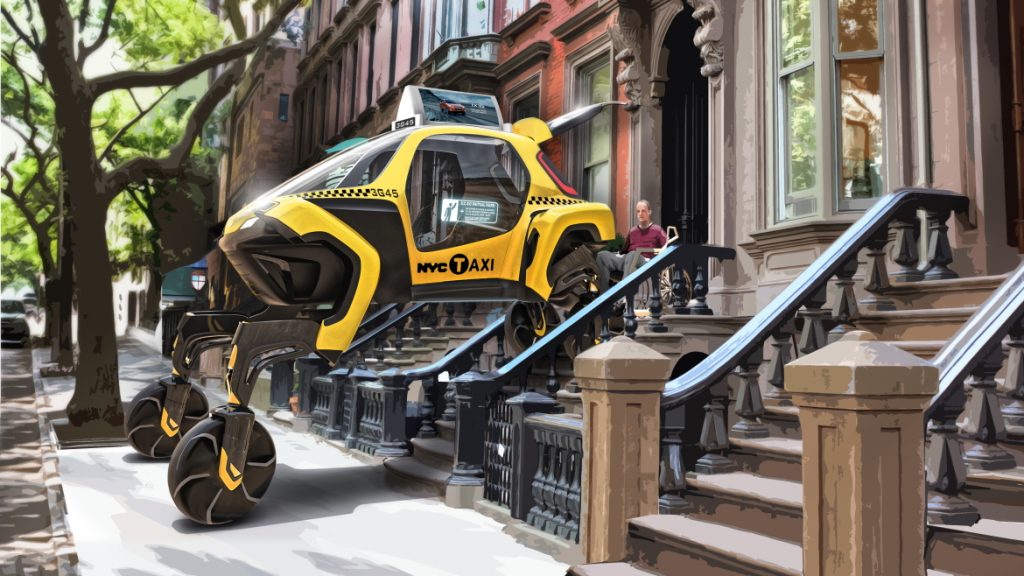
Software company Autodesk and Korean carmaker Hyundai have collaborated on a walking car prototype.
Last year, Hyundai revealed details of Hyundai ‘Elevate’ ahead of the Consumer Electronics Show (CES) 2019.
The Ultimate Mobility Vehicle has four moveable legs with wheels at the end, giving it the ability to transform from a four-wheeled driving vehicle to a four-legged climbing one. This makes it suitable for difficult or uneven terrain and Hyundai envisages that the vehicle could be used by emergency services.
The team used Autodesk’s generative design technology in the creation of a new prototype of the vehicle.
Generative design allows different design options to be explored using artificial intelligence. Users enter criteria for the design, and then AI generates many different potential solutions, streamlining the design process and allowing for the possibility of tackling design challenges in new ways.
“Generative design helps the human mind expand the range of possibilities,” said Hyundai vice president John Suh.
How well do you really know your competitors?
Access the most comprehensive Company Profiles on the market, powered by GlobalData. Save hours of research. Gain competitive edge.

Thank you!
Your download email will arrive shortly
Not ready to buy yet? Download a free sample
We are confident about the unique quality of our Company Profiles. However, we want you to make the most beneficial decision for your business, so we offer a free sample that you can download by submitting the below form
By GlobalData“With the help of generative design, a single designer or engineer can go through perhaps dozens or hundreds of different design iterations, so it enables them to see things that they may not have otherwise considered, and in tandem tackle complex problems. Which is to say that people still have a very important role to play in shaping the design direction. There will always be need for the human eye, the heart, and the soul as vital parts of the design process.”
For the Elevate concept vehicle, it was important for the structural components of joints of each of the vehicle’s “legs” to be strong and rigid, while the “feet” of the vehicle needed to be lightweight, and Hyundai utilised Autodesk’s technology to address these challenges.
The company’s expertise was also applied to the design of the seats within the vehicle.
Using Autodesk’s generative design expertise, as well as Fusion 360, Autodesk’s computer-aided design, manufacturing and engineering software platform, Hyundai was able to create a 5:1 scale prototype of Elevate.
Suh said: I’m looking forward to the day that we can turn Elevate from the concept it is today, to the experimental prototype of the future, to the product that can be out there in the field.”
Hyundai recently announced the creation of New Horizons Studio, overseeing the development of Ultimate Mobility Vehicle including Elevate.
“More than 10 years ago, we identified the pain points, rework required and loss of valuable information when projects move from one phase to the next and the associated files don’t play nicely in the heterogenous environments organizations so often use,” says Srinath Jonnalagadda, vice president of design and manufacturing at Autodesk.
“Creating a design and engineering platform that helps remove those hurdles, while also putting advanced capabilities such as generative design tools at the fingertips of designers, has been our North Star for a decade. The Elevate project is a showcase of how leaders like Hyundai can now enjoy the fruits of that vision.”
Read More: Hyundai unveils walking car ahead of CES 2019.







